

|
| Home Previous Next | |
|
|
|
[Click on any photo to enlarge it] Day Nine - Yangtze River Cruise, page 1Wu Gorge, Empress Stream, Qutang GorgeI stayed up and watched our passage through the Three Gorges Dam for quite a while, but finally went off to bed. During the night I woke up and went out on the balcony to see if I could see anything. It was incredibly dark, but it seemed as though we were passing a huge lightly-colored wall of some sort. It didn't seem to make sense, but it was so difficult to see. A few hours later I woke up again and saw the same thing. When morning finally came I realized that I was seeing the part of the mountain that was below the usual water level. It was very high above our ship. We had another hazy day, but I suspect it's like that a lot along the river because the humidity is so high. 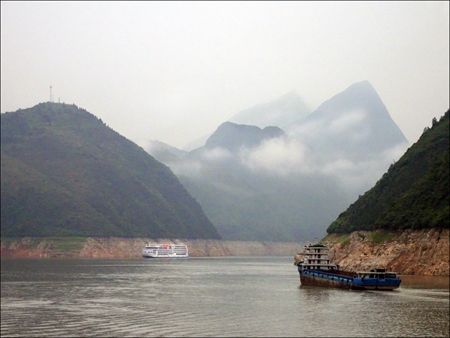
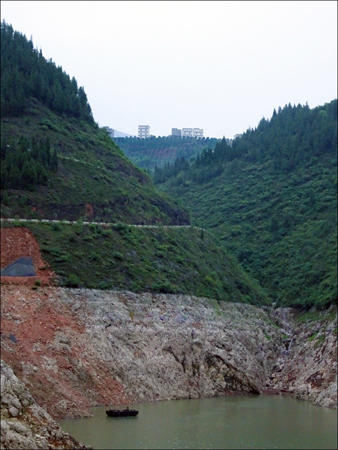
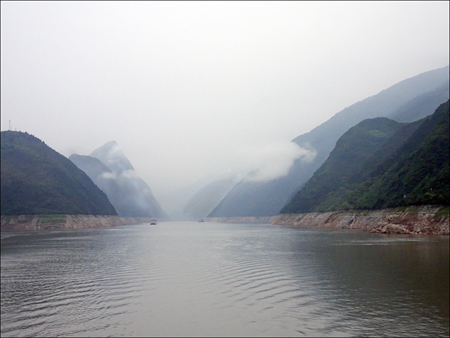
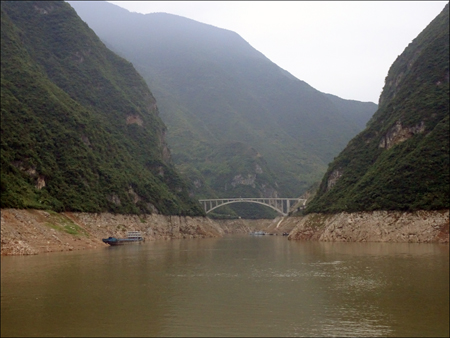
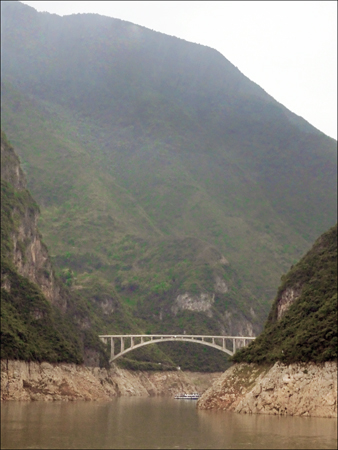
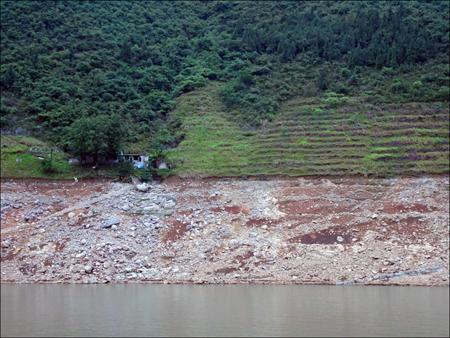
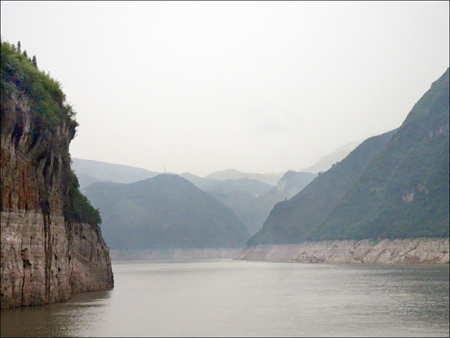
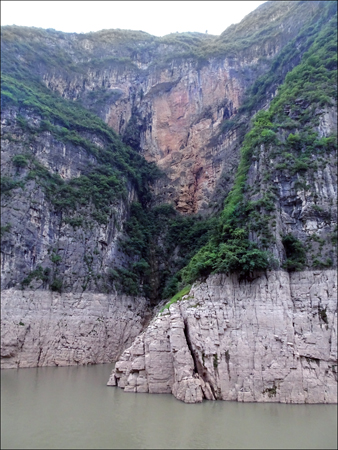
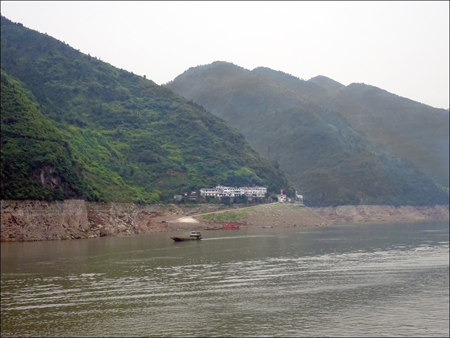
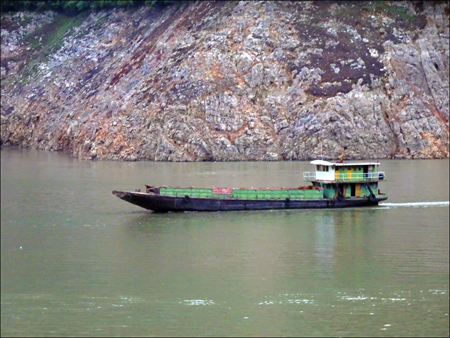
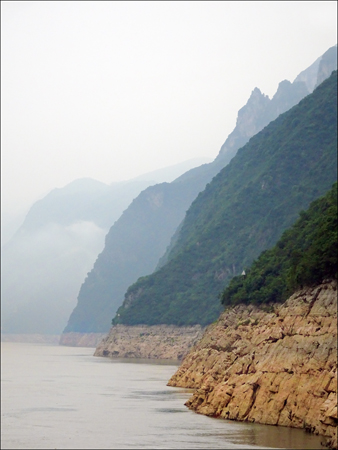
Wu GorgeAfter passing through the Three Gorges Dam we entered the Wu Gorge 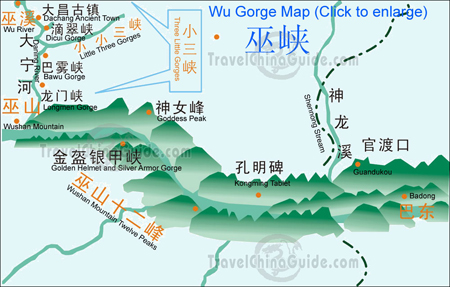
The Wu Gorge stretches between Guandukou in Badong, Hubei Province and the estuary of Daning River, east of Wushan - a distance of over 25 miles. There are many deep and long canyons in this gorge rising 1000m (3280 feet) above river level. There are many tall and strangely-shaped peaks. It is the most charming and graceful of the three gorges. The high peaks create their own weather system and also block out the sun for much of the day, which doesn't allow for the clouds and fog to dissipate. In many areas there fantastic shapes of clouds nipping around the various peaks. All of this provides much inspiration for Chinese artists & poets, and it's easy to see why. 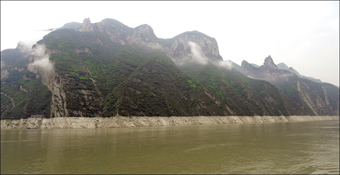
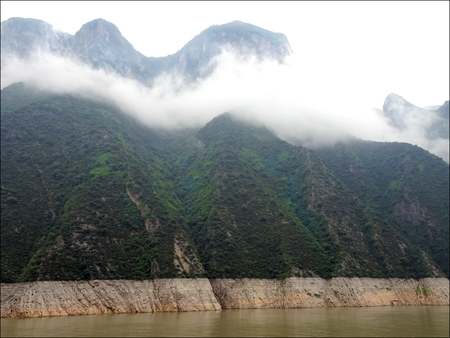
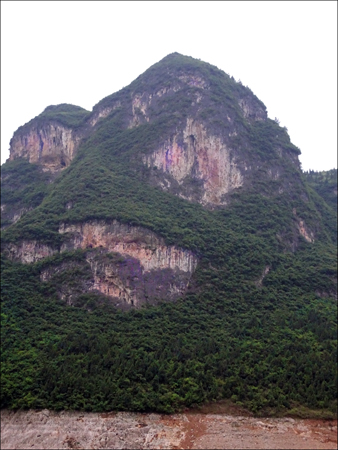
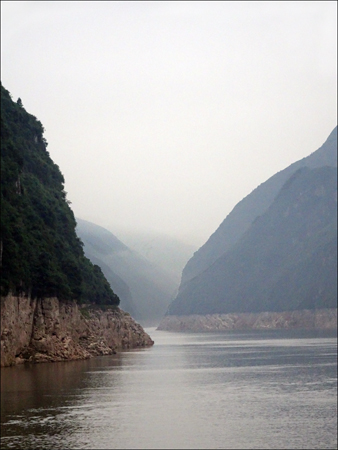
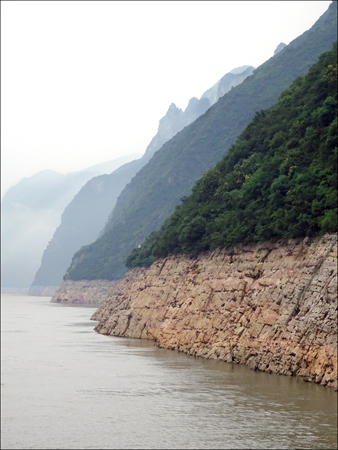
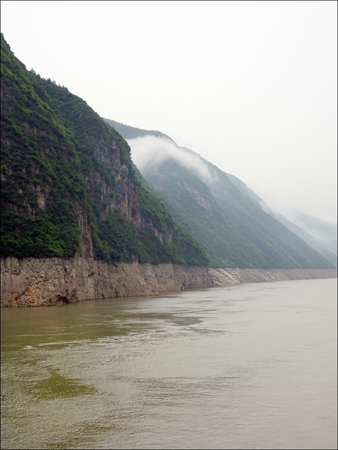
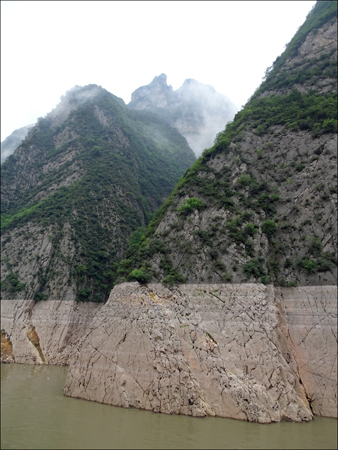
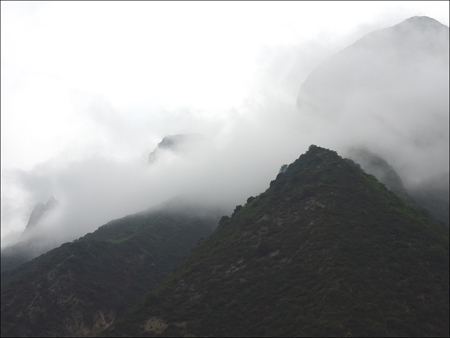
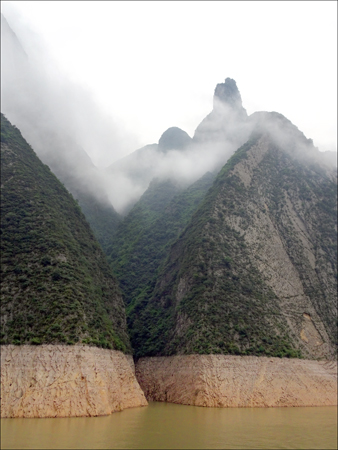
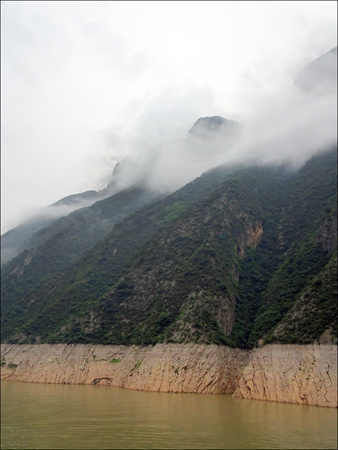
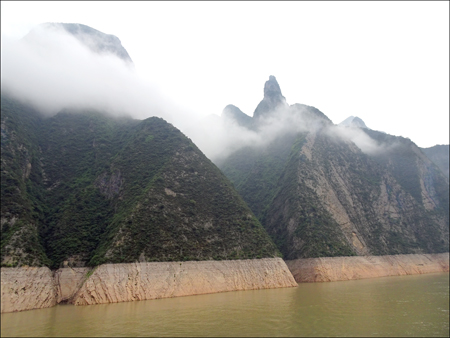
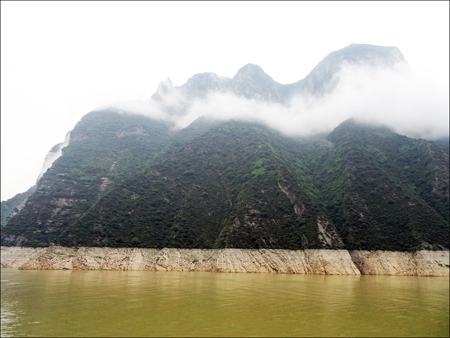
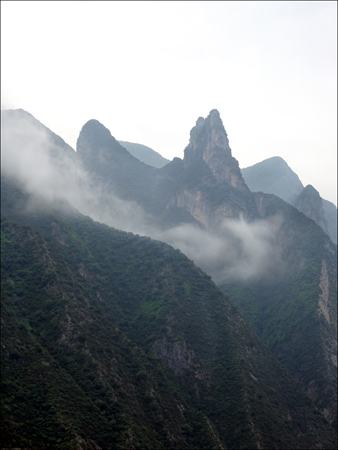
Around 7:00 A.M. we arrived at Qingshi Village which was the stopping point for our morning excursion. 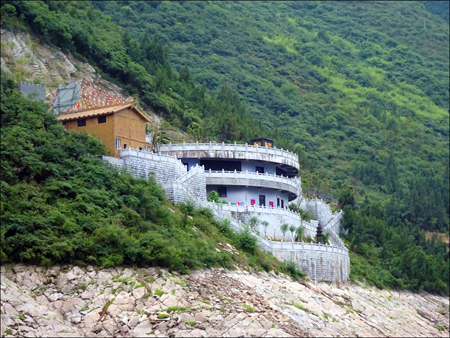
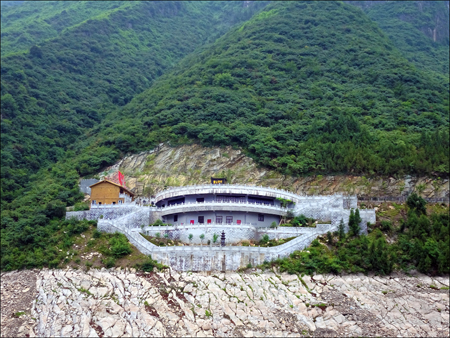
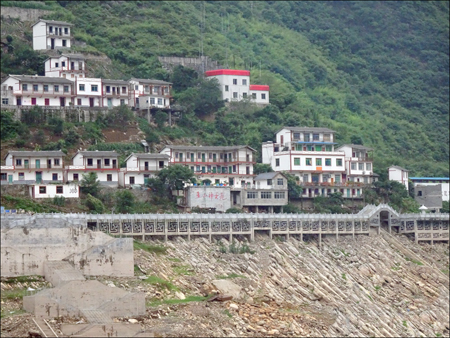

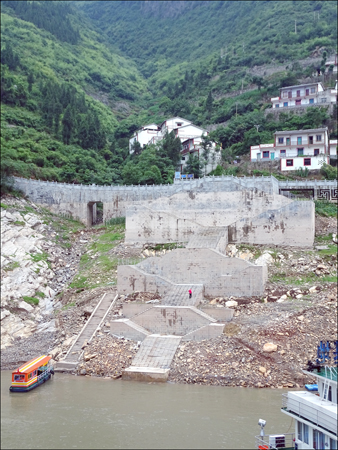
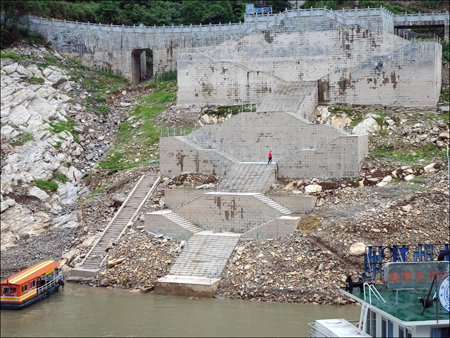
Goddess StreamThe Goddess Stream (Shennv Stream) is a narrow stream in between the mountains. It was too small for our ship to travel in, so we had to disembark and get on some smaller boats. 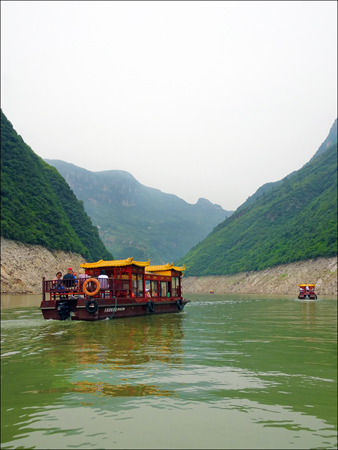
This scenic area is a newly developed area that formed with the building of the Three Gorges Dam. So it is still very pristine. The stream is very serene and beautiful. As with all of the places we visited, we had a local guide to explain to us about this area. At the far end of the stream there is a small village with only a dozen families or so. This is where our guide came from. 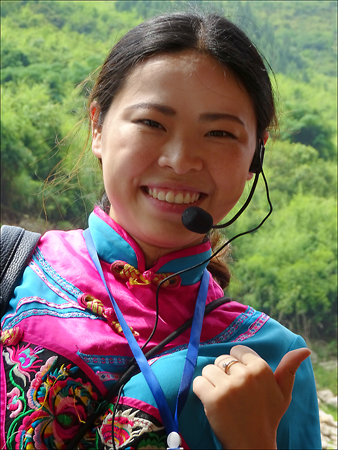
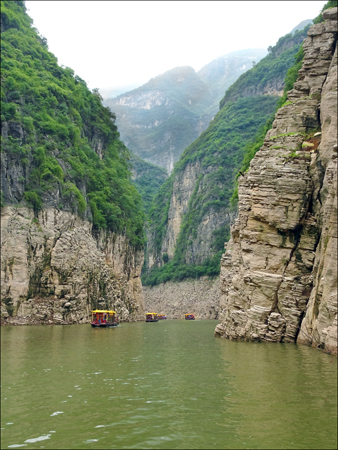
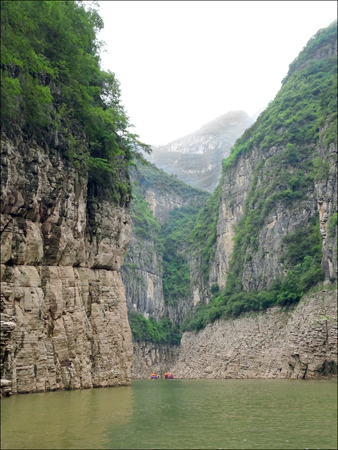
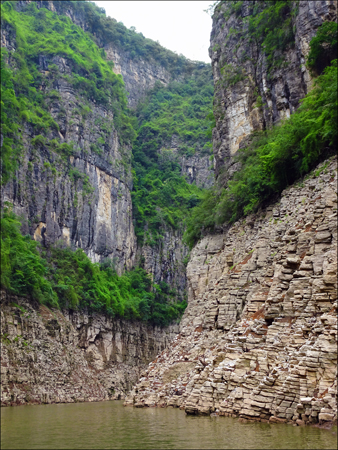
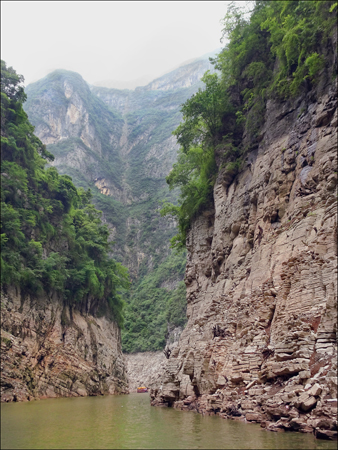
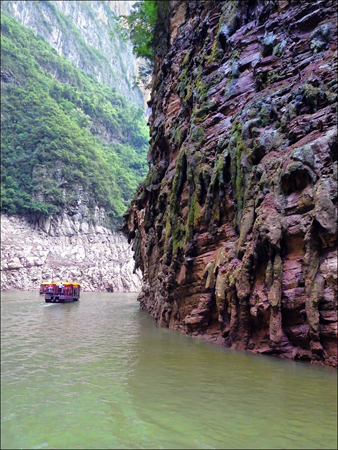
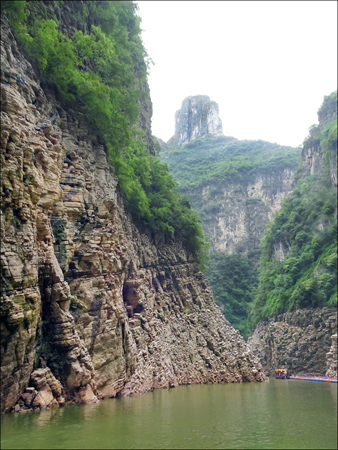
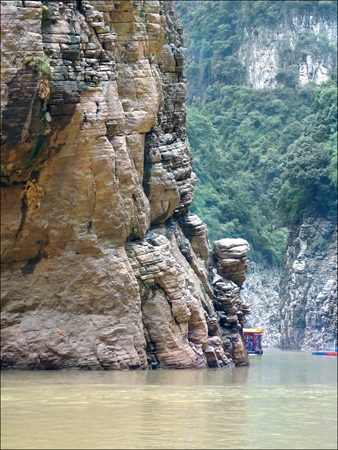
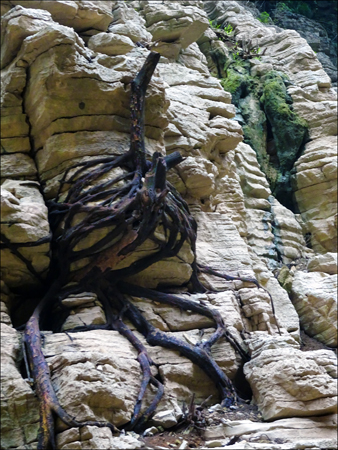
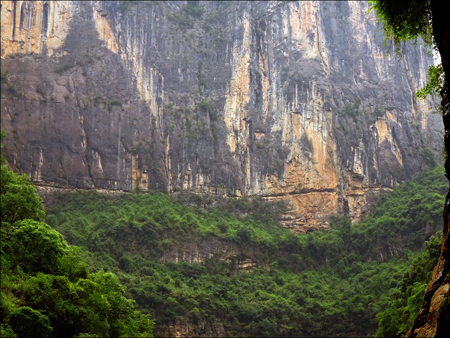
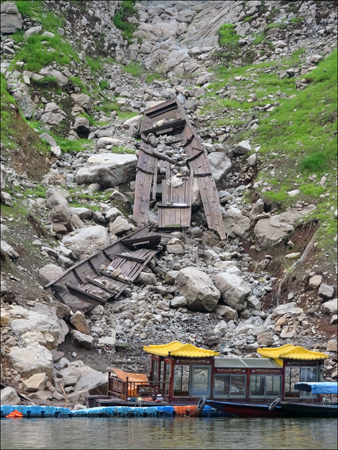
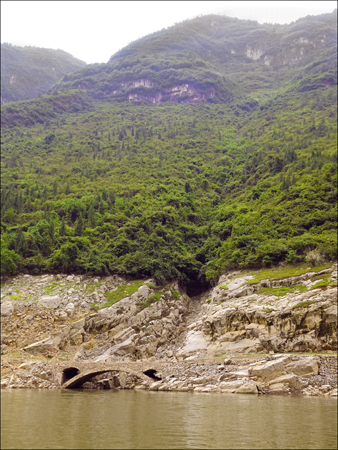
Shortly after leaving the Goddess Stream, we passed the city of Wushan. This is the westernmost end of the Wu Gorge and will be the beginning of the Qutang Gorge, the last of the three gorges. It began with the Wushan Yangtze River Bridge. Most everyone with our group learned about my love of bridges. I will try not to bore you with all the bridge photos I took (maybe another website someday), but this bridge is quite beautiful and an important one to mention. This magnificent bridge is one of the largest arch bridges in the world. Its central span ranks 7th at 1,509 feet (460 meters). Completed in 2005, this is also one of the highest arch bridges in the world, however once the Three Gorges Dam was completed, the rise in water level has hidden its true height. 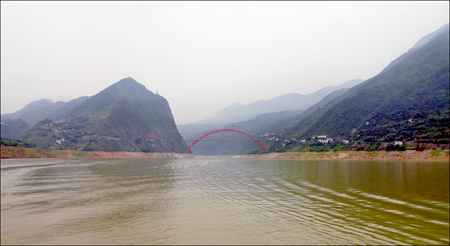
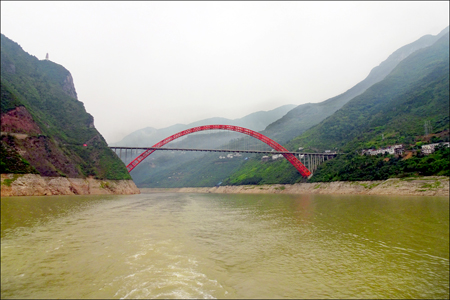
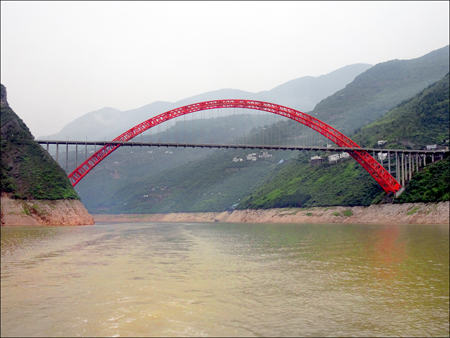
The building of the Three Gorges Dam caused many of the cities along the Yangtze to be rebuilt at a higher level. Much of the old cities are now underwater. Here are some photos of the new and higher Wushan. 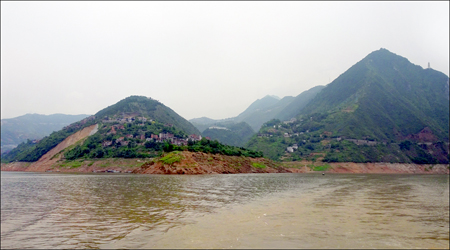
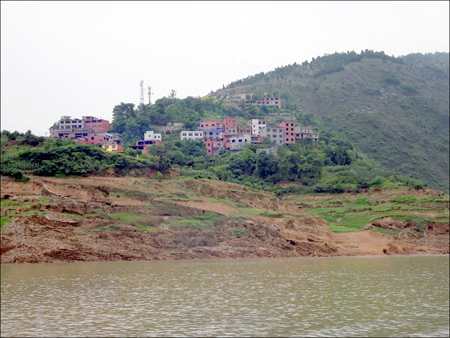
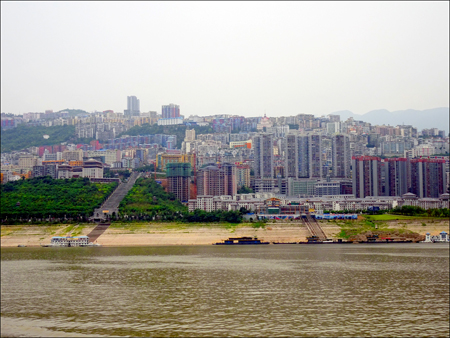
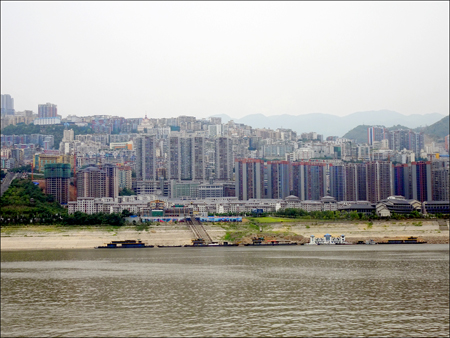
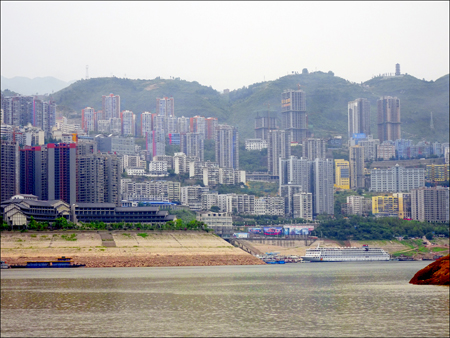
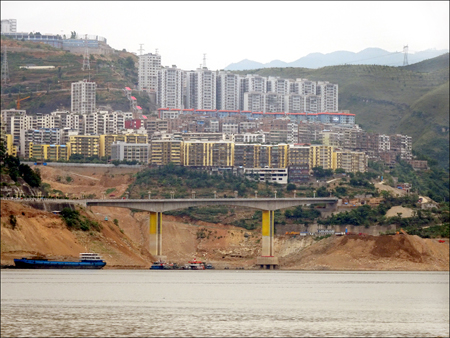
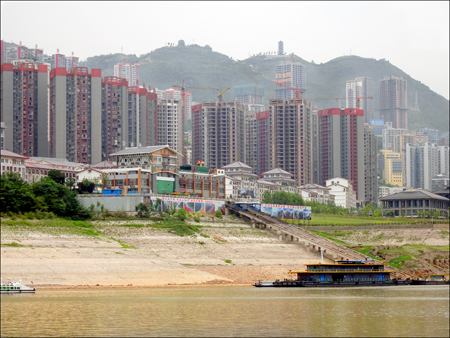
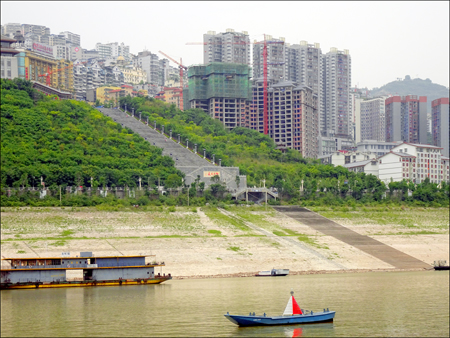
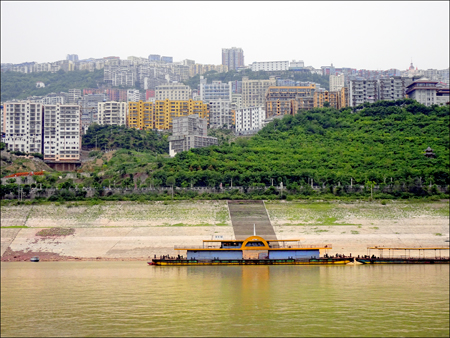
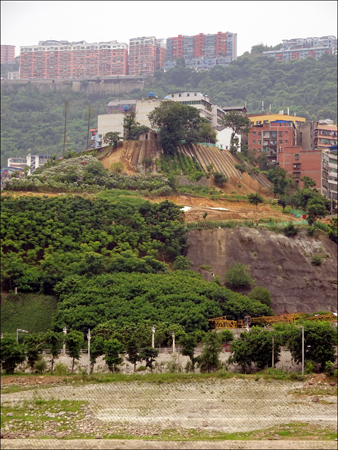
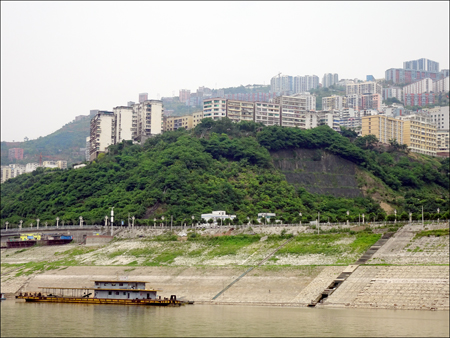
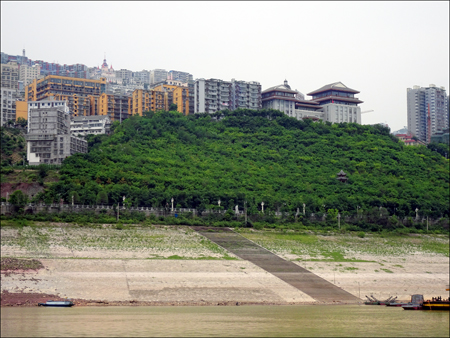
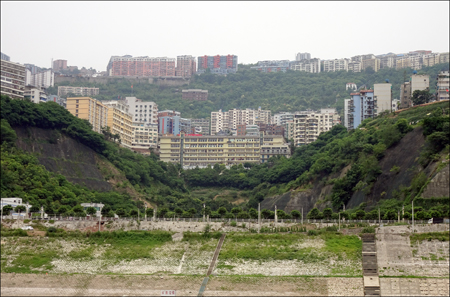
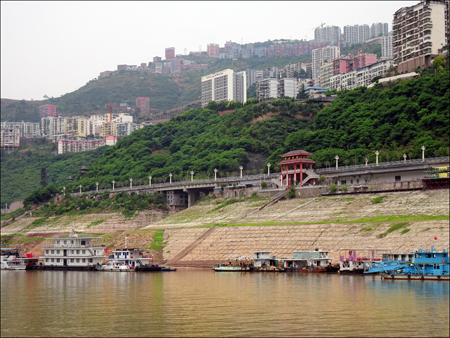
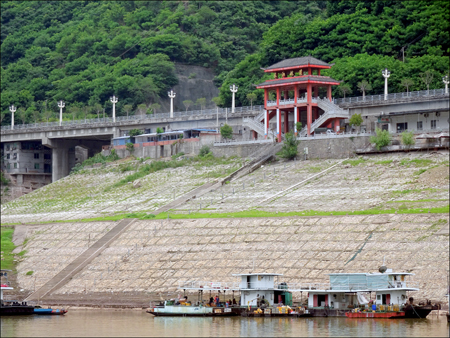
Qutang Gorge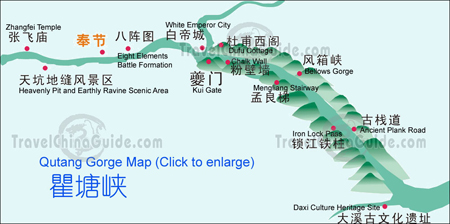
Qutang Gorge is the shortest of the three gorges, but it is also the highest. The Wu Gorge is considered the most graceful and the Xiling Gorge the most treacherous. We passed a few tiny villages or communities where you could see scattered farmhouses with crops and livestock. 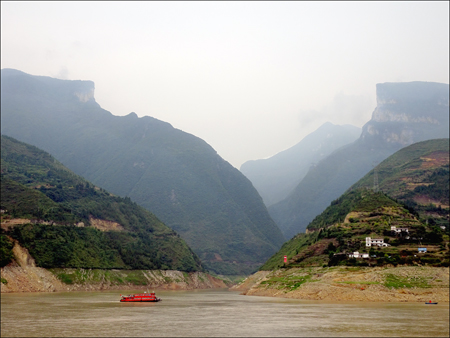
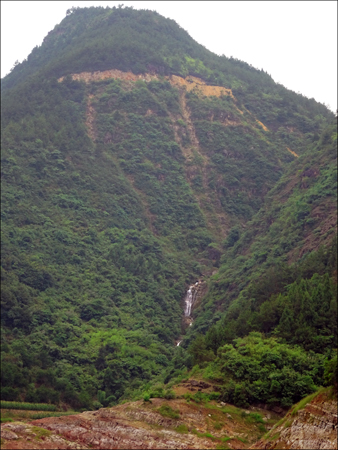
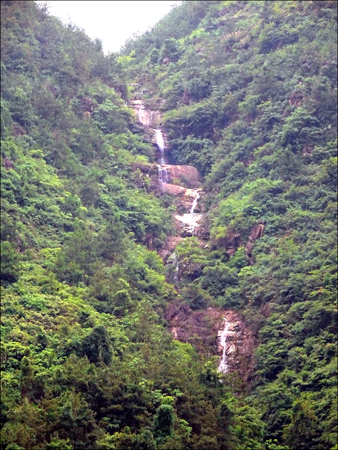
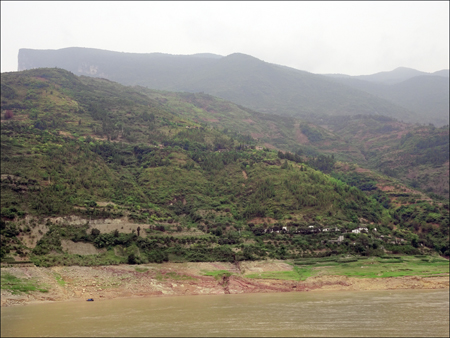
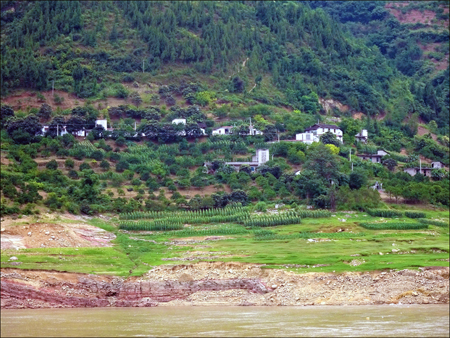
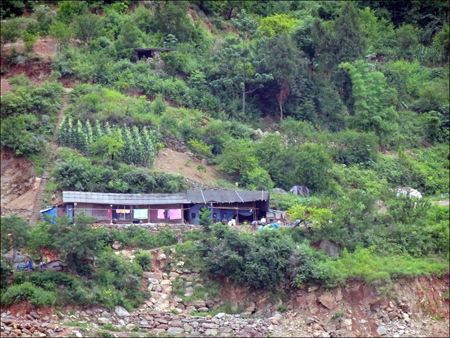
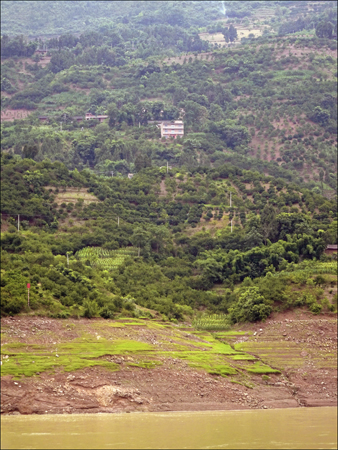
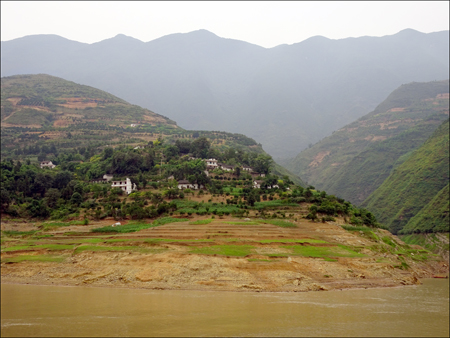
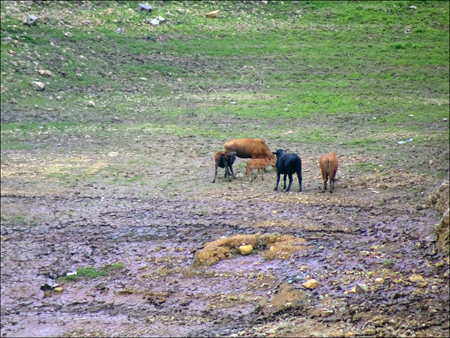
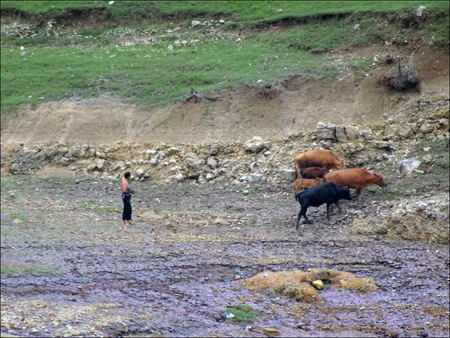
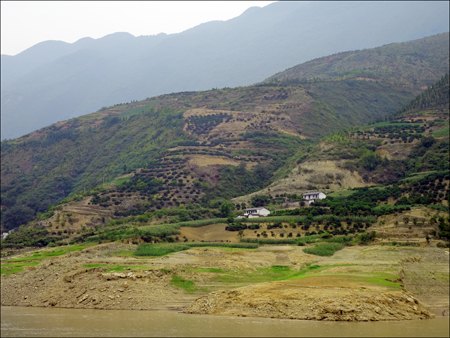
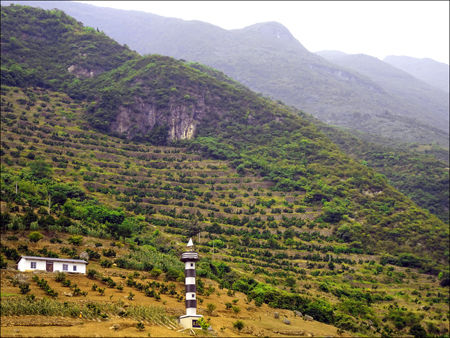
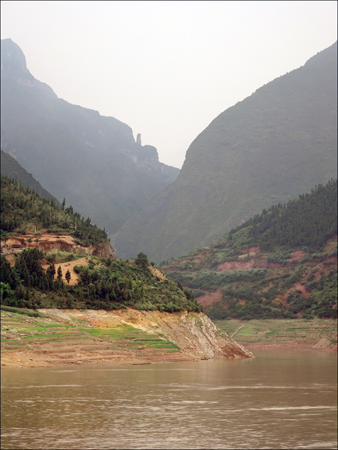
This river and these mountains have to be a geologist's dream. So amazing. 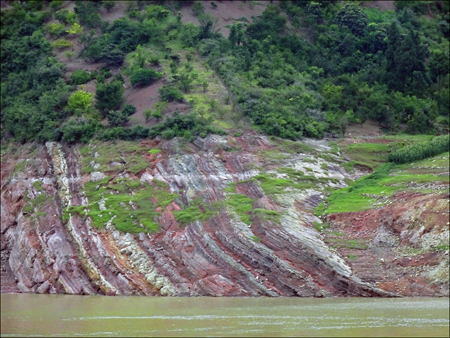
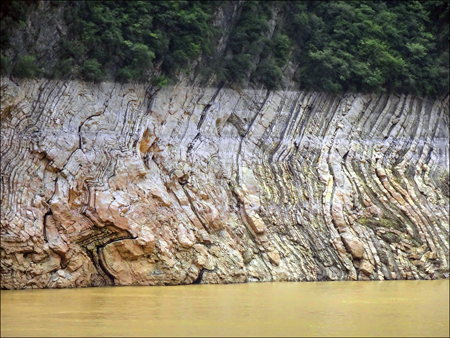
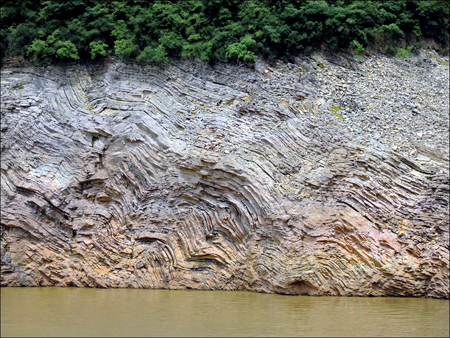
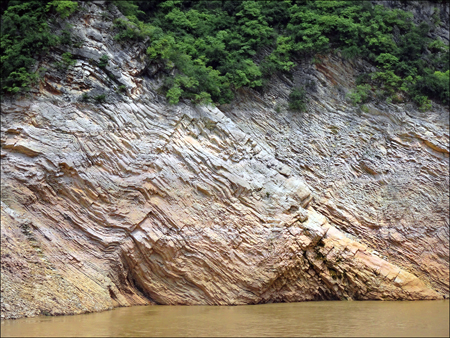
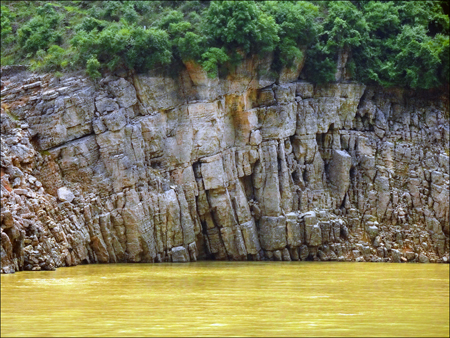
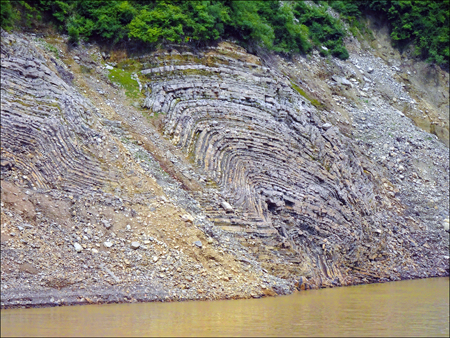
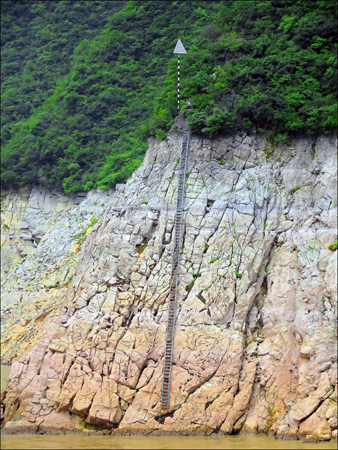
One of the curiosities to be found along the Yangtze River is the hanging coffins. They are still a mystery, but some have been dated over 2,000 years. The coffins were hung between 30 feet and 300 feet high. Some were found hanging directly from the side of the cliff, others in natural or chiseled-out caves in the cliff face. No one seems to know how the coffins were raised to those levels. I was not able to see any of the coffins, but saw several of the caves. 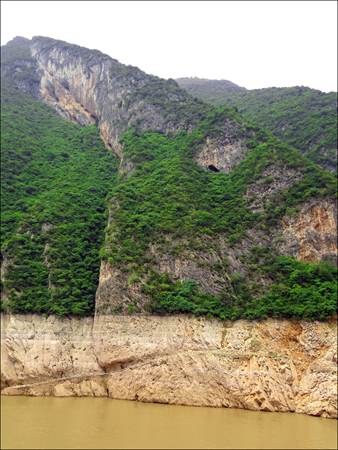
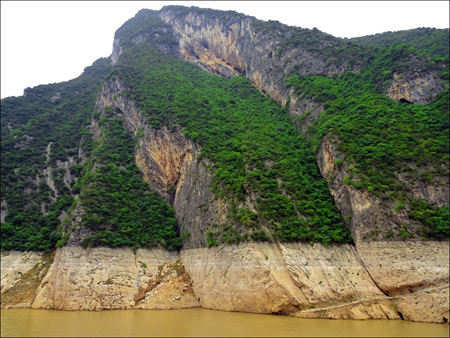
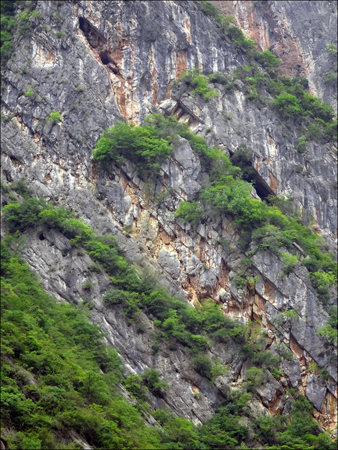
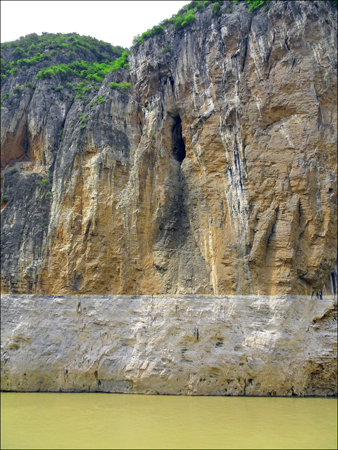

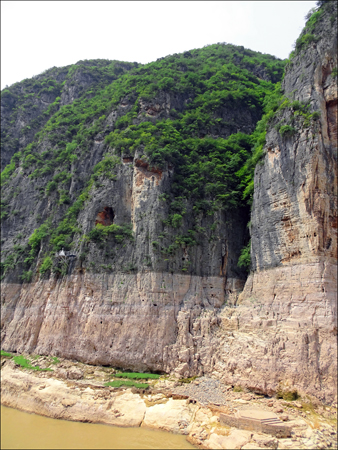
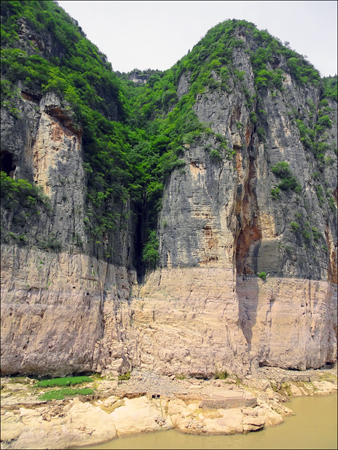
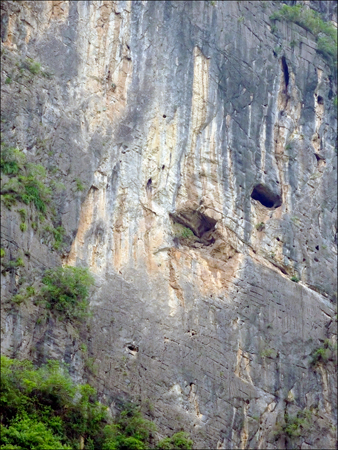
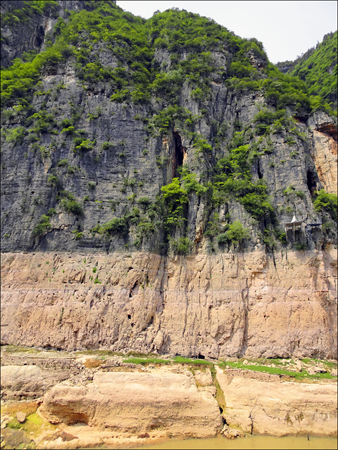
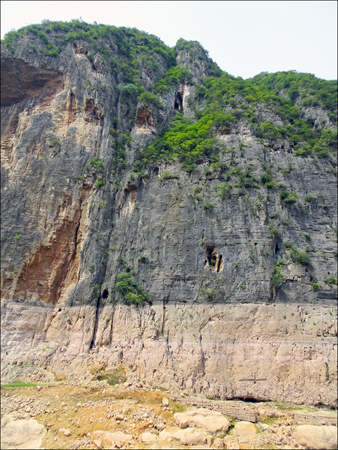
With Qutang Gorge being the shortest of the gorges, we finished traveling through it in a very short time. 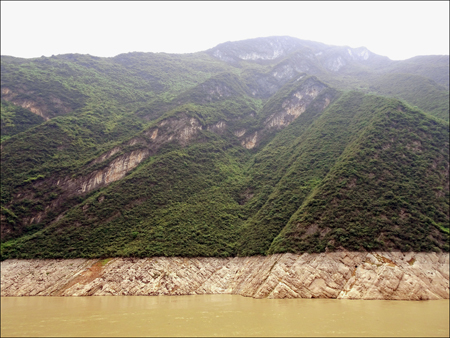
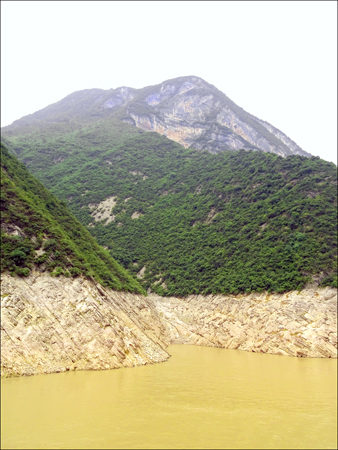
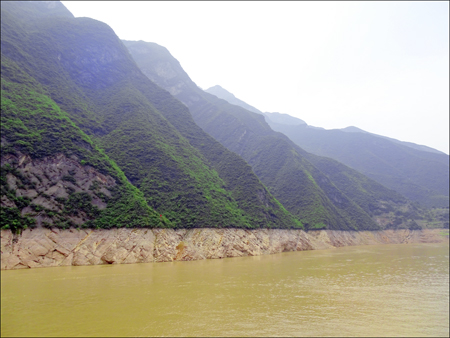
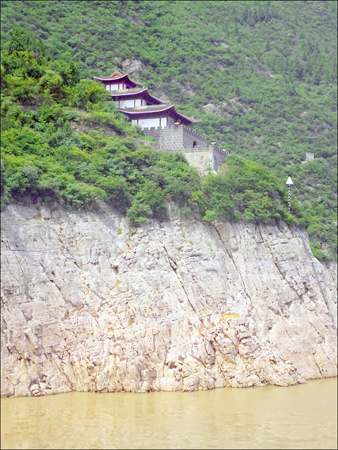
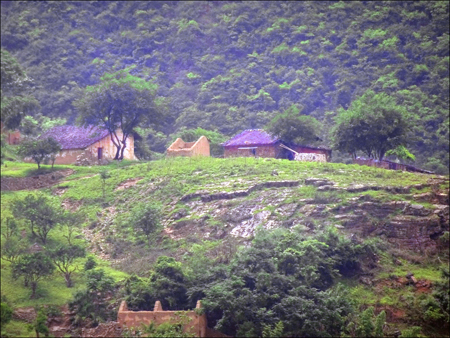
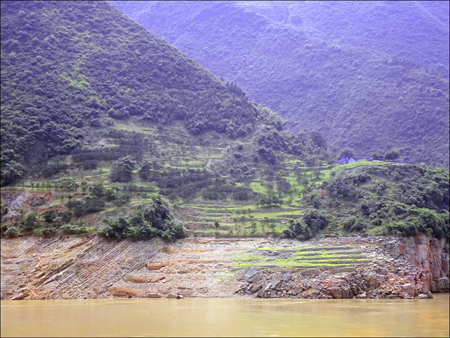
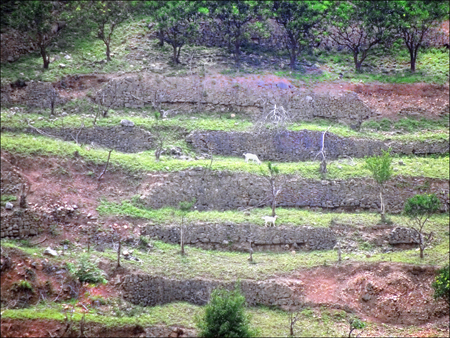
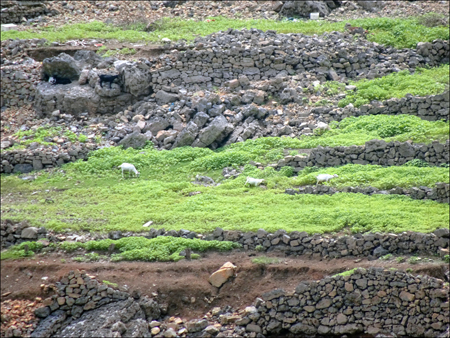
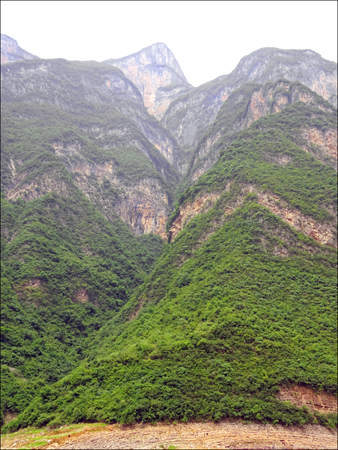
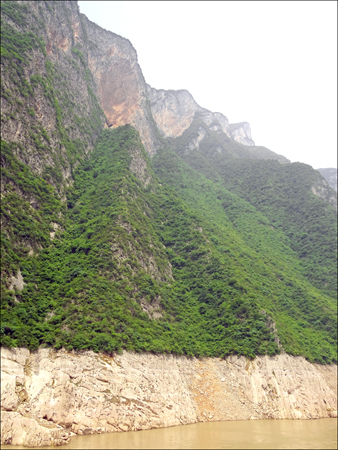
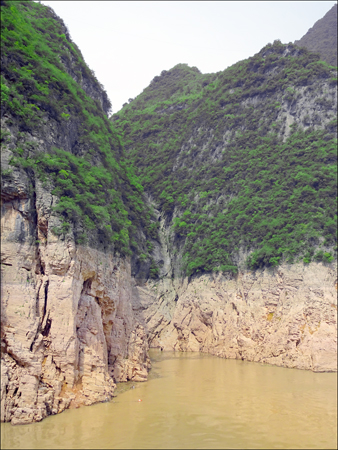
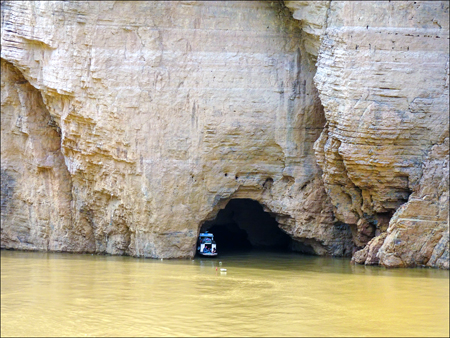
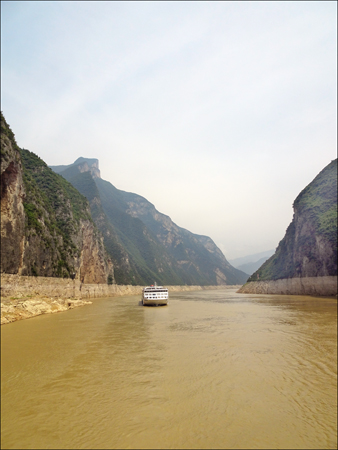
Qutang Gorge, also known as Kui Gorge, stretches from Baidi Cheng of Fengjie County in the west and to the Daxi Township of Wushan County in the east - about 8 kilometers. At the western end of the gorge, where we were just leaving the three gorges area, two mountains, Chijia Mountain and Baiyan Mountain, sit on either side of the river no more than 100 meters apart, forming a gate known as the "Kui Gate." On both banks of the river there are inscriptions everywhere. Some of these carvings date back to the Song Dynasty (960-1279). One of the inscriptions is on a large tablet four yards high by 9 yards wide. A Song Dynasty calligraphist carved over 980 characters on it. The words 'Kui Men' and 'Qu Tang' were carved here by someone in the Qing Dynasty (1644 - 1911). And, unfortunately, a great many carvings are now underwater with the building of the Three Gorges Dam. 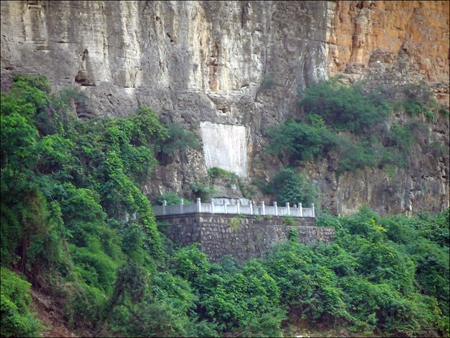
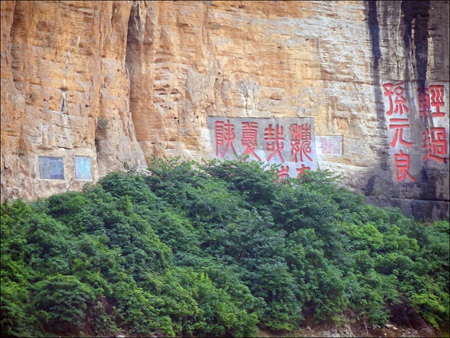
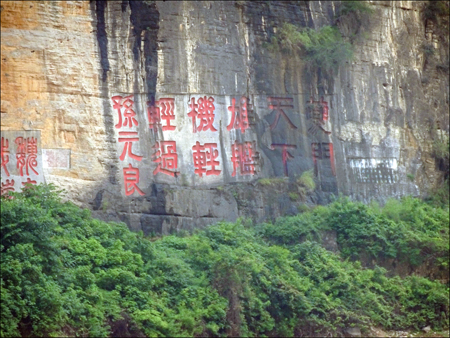
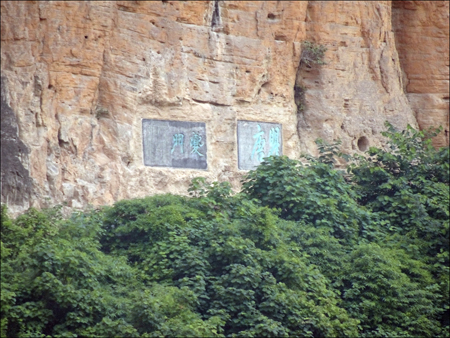
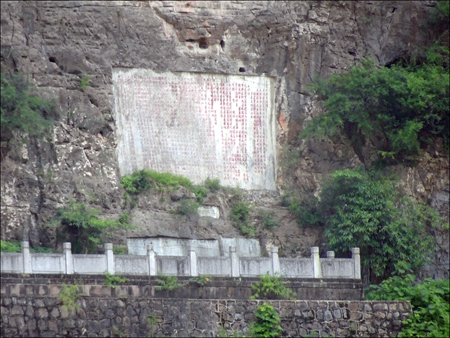
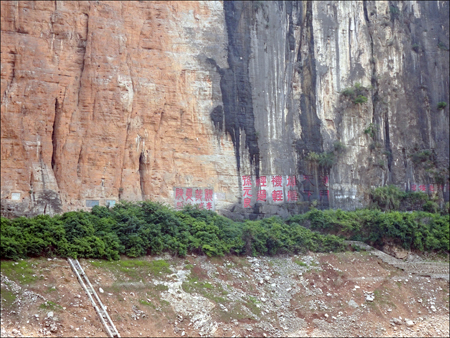
This day was very full. So far this only takes us to around 2:00 P.M.. There is so much more to come, so I will continue on the next page. Meanwhile, here are some more postcards. Click here for Postcards of The Three Gorges |
|
| Home Previous Next | |
|
|

|
|
|
Irma Hale E-mail: Copyright © Irma Hale. All
Rights Reserved. Free counters provided by Vendio |